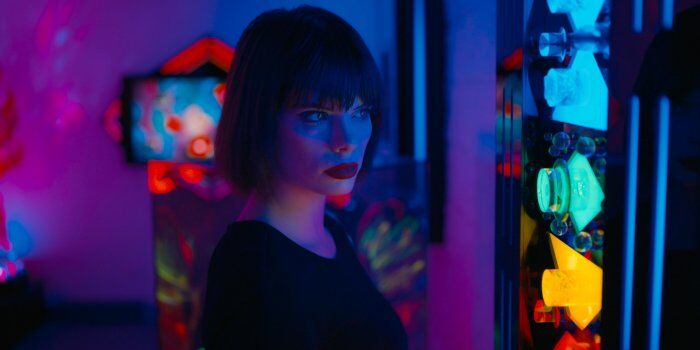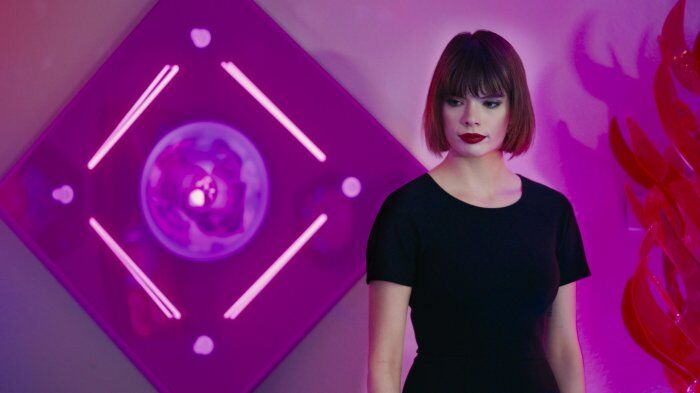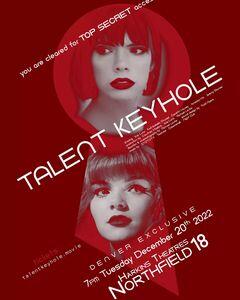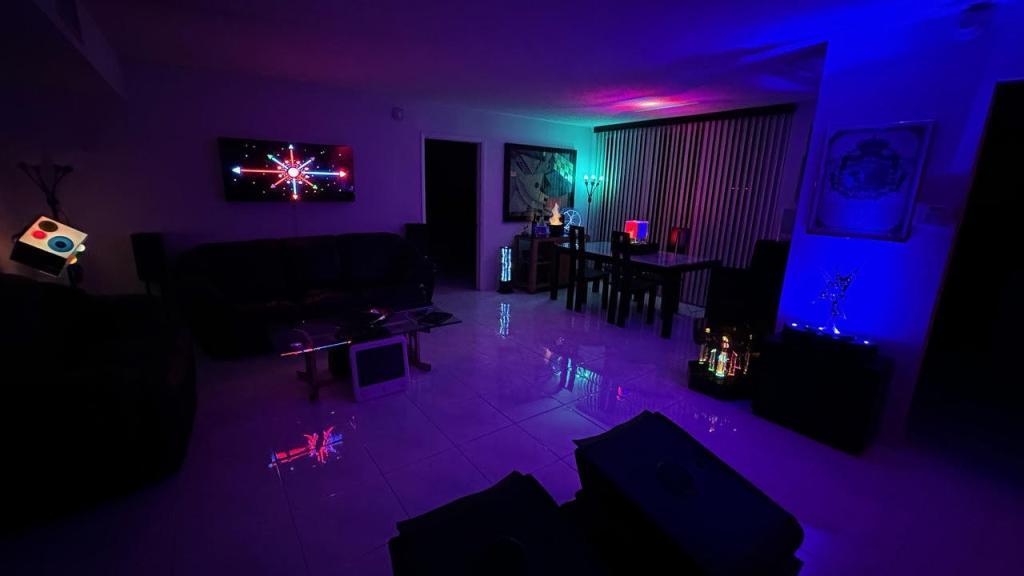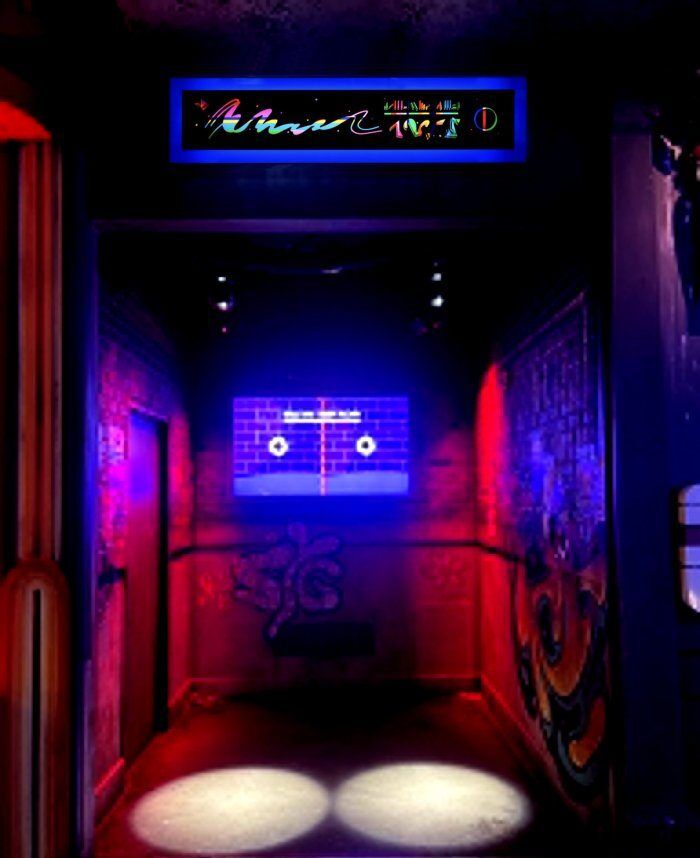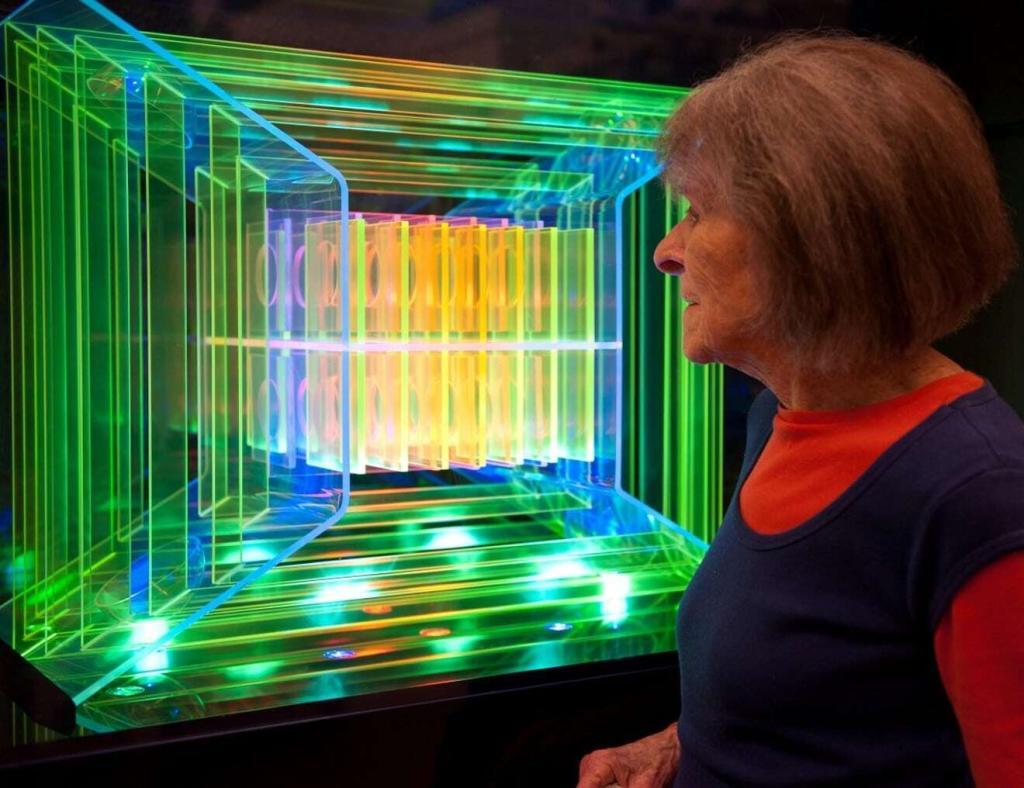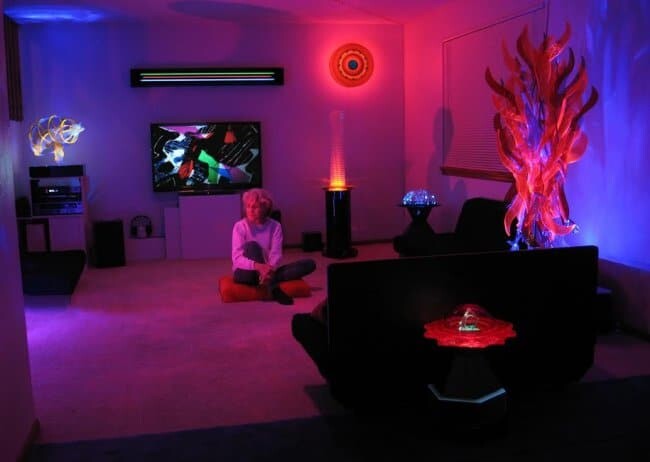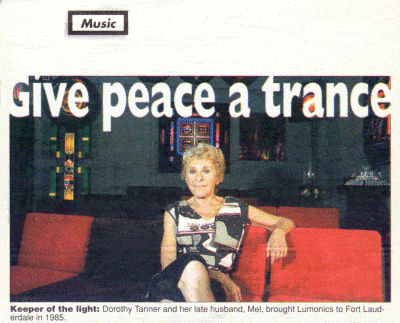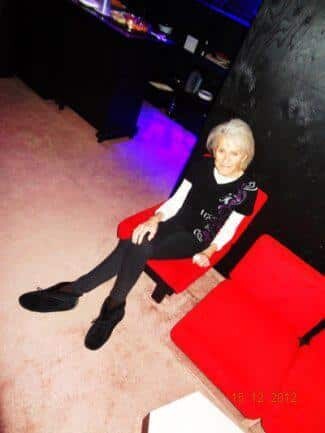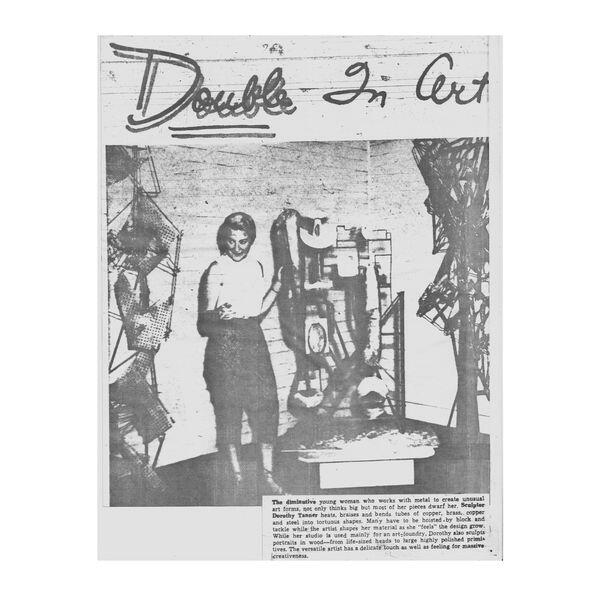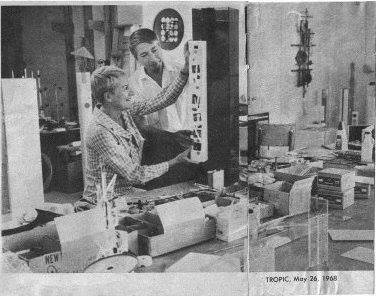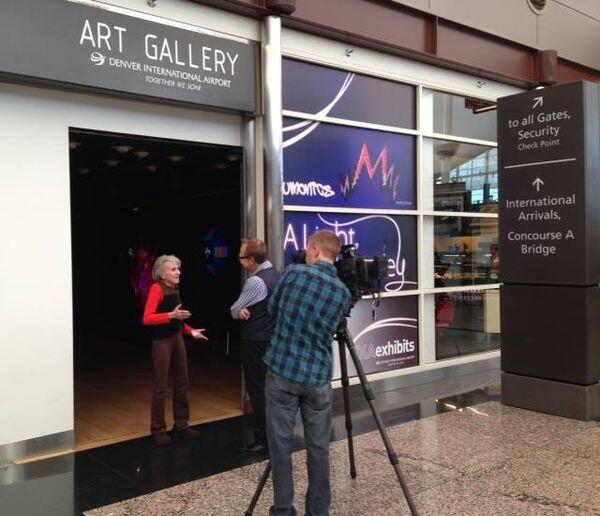Director Michael Lauter filmed part of his sci-fi film noir, Talent Keyhole at the Lumonics Light & Sound Gallery. The film was recently released.
“Thanks again for allowing us to film in your amazing gallery, It immensely elevated the film’s aesthetic and quality! The actress in these is Kris Luna, playing the character Kassandra.”
—–
Kassandra, a brilliant scientist, is recruited into a defense contractor’s top secret SCIF where she’s entangled in a dangerous espionage mission.
—–
Director Michael Lauter pulls from his personal experience working in a Sensitive Compartmentalized Information Facility (SCIF) to beautifully blend science-fiction, espionage, romance, and film noir to bring “Talent Keyhole” to life and create a once-in-a-lifetime cinematic experience. The film’s title is a reference to the United States’ space-based reconnaissance program. *
* excerpted from “Talent Keyhole Feature Film World Premiere”
